SURREALISM (c. 1924-1939)
"To create is divine, to reproduce is
human." Man Ray
A positive approach to Dada’s negativity came out of the book “Les Champs Magnetiques” (The Magnetic Fields, 1920),
written by Andre
Breton and Phillipe Soupault, which lead to the Surrealist
movement. In 1924, Breton issued the Surrealist manifesto, which defined Surrealism as:
"Psychic automatism in its pure state, by which one
proposes to express — verbally, by means of the written word, or in any other manner — the actual functioning of
thought. Dictated by the thought, in the absence of any control exercised by reason, exempt from any aesthetic or
moral concern."
Surrealism’s aim was to liberate the artist's
imagination by tapping into the unconscious mind to discover a 'superior' reality - a 'sur-reality'. To achieve
this the Surrealists drew upon the images of dreams, the effects of combining disassociated images, and the
technique of 'pure psychic automatism', a spontaneous form of drawing without the conscious control of the mind.
Surrealist automatism is different from mediumistic automatism, from which the term was inspired. Ghosts, spirits
or the like are not purported to be the source of surrealist automatic messages.
In short, Surrealism is the French version of Dada. Automatic writing
influenced French painters and opened the door to the unconscious. The result became the art of
Surrealism.
At the outbreak of war in 1939, many Surrealists left Europe for New York, closing
the chapter called Surrealism only to set the stage for the next movement - Abstract
Expressionism.
GIORGIO DE
CHIRCO (1888-1979)
“The Enigma of the Arrival and the
Afternoon” (1912)
Oil on Canvas (private collection)
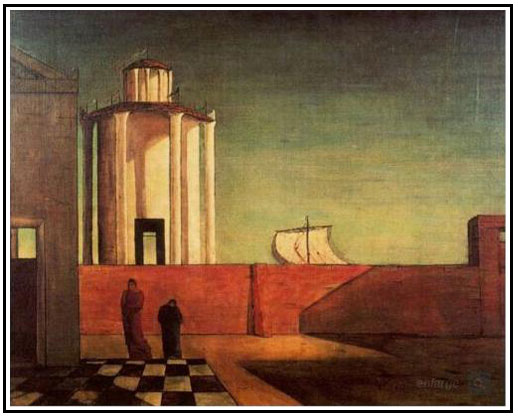
“Song of
Love” (1914)
Oil on Canvas (Museum of Modern Art, New York City)
“Song of Love” is an early example of the surrealist style. It was painted ten
years before the movement was “founded” by Andre Breton in 1924.
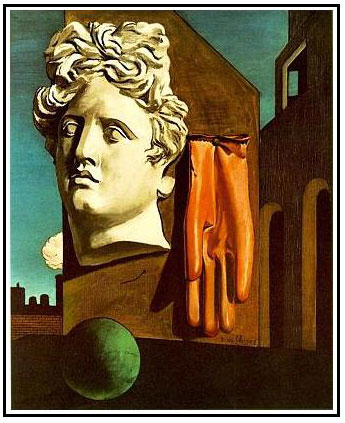
PAUL KLEE (1879-1940)
“Twittering
Maching” (1922)
Watercolor and Ink; Oil Transfer on Paper with Gouache & Ink on Border (Museum of
Modern Art, New York City)
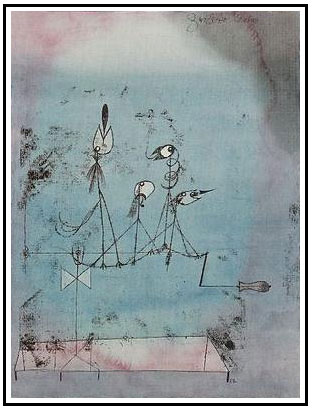
JOAN
MIRO (1893-1983)
“TheTilled Field” (1923)
Oil on Canvas (Guggenheim Museum, New York City)
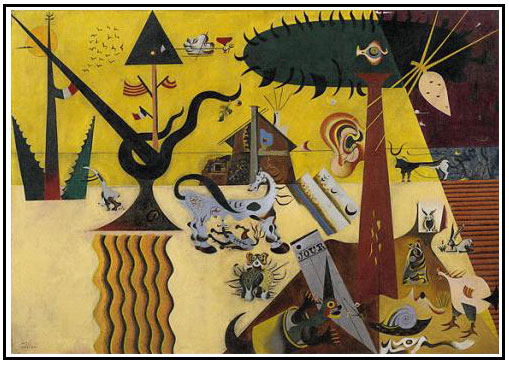
"The Birth of the
World" (1925)
Oil on Canvas (Museum of Modern Art, New York City)
"Birth of of the World" shows how far Miro was ahead of his time - painted 22 years
before Jackson Pollock's "Full Fathom Five" (1947): the new era
of "Action painting".
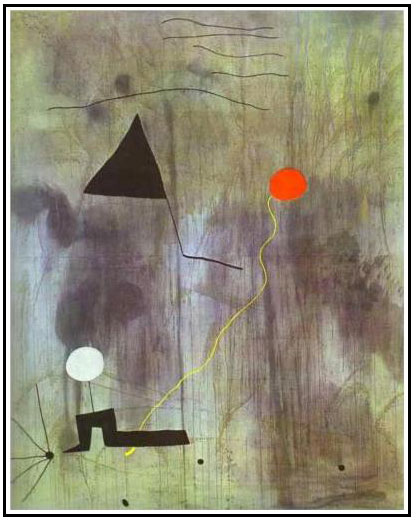
ANDRE
MASSON (1896-1987)
“Automatic
Drawing” (1924)
Ink on Paper (Museum of Modern Art, New York City)
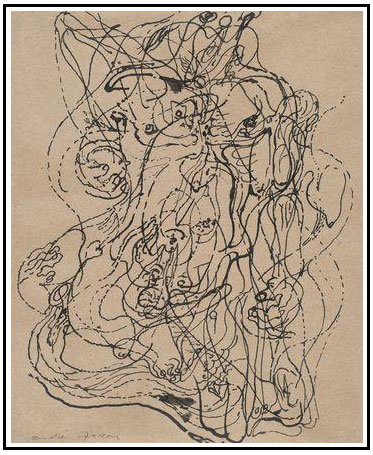
RENE MAGRITTE
(1898-1967)
In 1910 when Magritte was 12 the family made its last move to a house
near the river in the industrial town of Chataley about 30 miles from Brussles. Of all the
childhood experiences which feed Magritte's art what happened here was painful. His mother, quite
unexpectedly drowned herself in the river. A friend of Magritte described what happened. She was
sharing her room with her youngest child. Finding he was alone, in the middle of the night he awoke the
family. Noticing footprints on the doorstep and the pavement outside, they traced them to a bridge over
the river Sombem. Magritte's mother had thrown herself into the water. When her body was retreived, her
face was enveloped in her night dress. It was never known whether she had covered her eyes so as not to see
the death see chosen or if the current had covered her this way.
“The
Lovers” (1928)
Oil on Canvas (Museum of Modern Art, New York City)
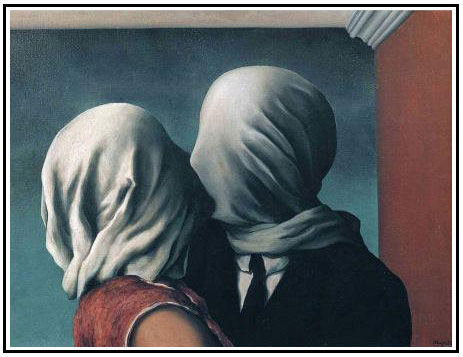
“The Treachery of
Images” (1929)
Oil on Canvas (Los Angeles County Museum of Art)
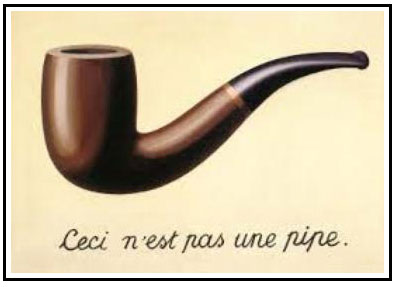
“The Human
Condition” (1933)
Oil on Canvas (National Gallery of Art, Washington D.C.)
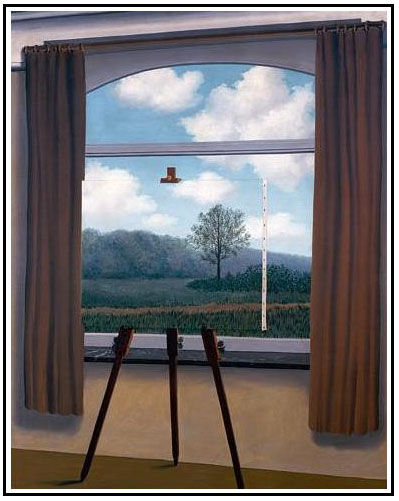
“Castle in the
Pyrenees” (1959)
Oil on Canvas (Israel Museum, Jerusalem, Israel)
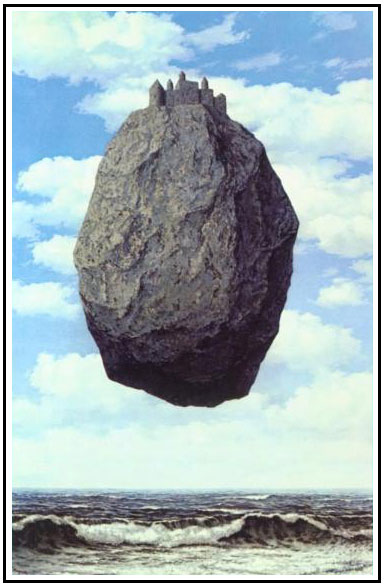
SALVADOR
DALI (1904-1989)
“The Persistence of
Memory” (1931)
Oil on Canvas (Museum of Modern Art, New York, NY)
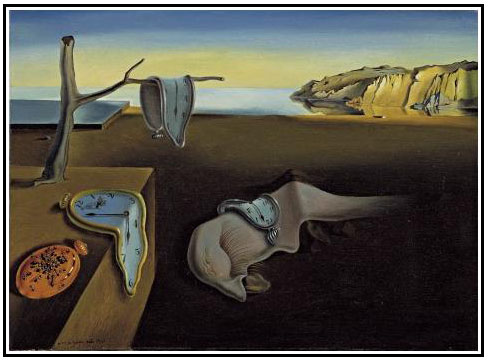
“Crucifixion” (1954)
Oil on Canvas (Metropolitan Museum of Art, New York
City)
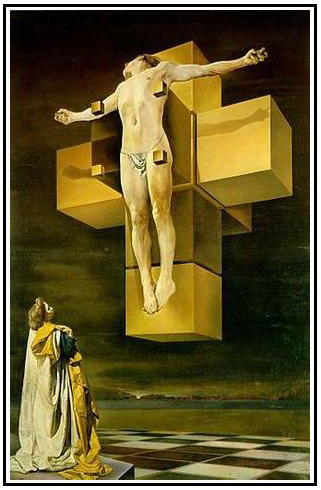
VALENTINE
HUGO (1887-1968)
“Portrait of Arthur
Rimbaud” (1933)
Oil on Panel with encrusted rhinestones and collage (private
collection)
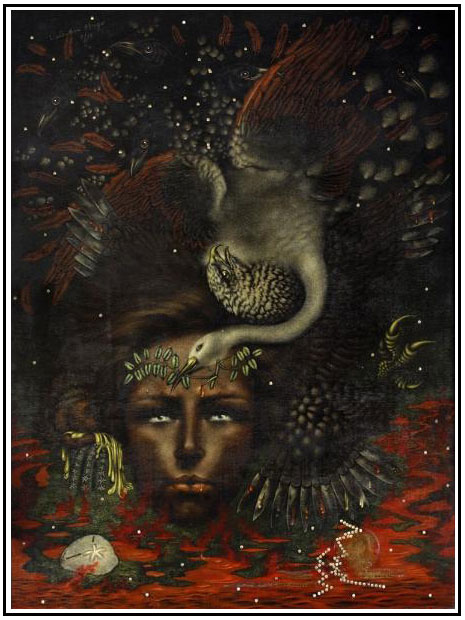
HENRY
MOORE (1898-1986)
“Composition” (1934)
Bronze (Smart Museum of Art, Chicago, Illinois)
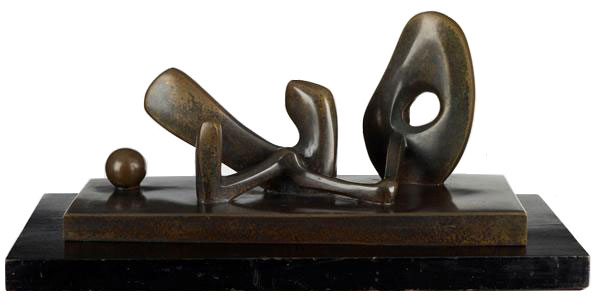
PABLO
PICASSO (1881-1973)
"Femme aux bras
leves" (1936)
Oil on Canvas (Museo Picasso, Malaga, Spain)
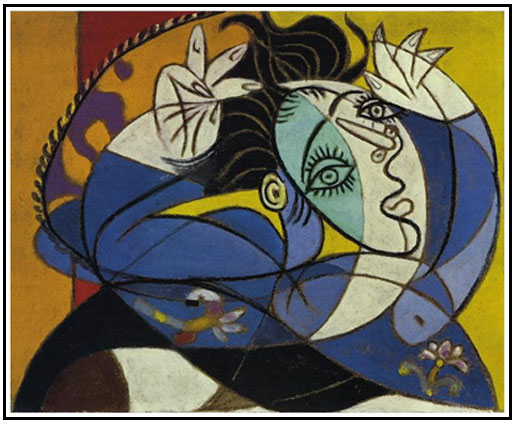
"Guernica" (1937)
Oil on Canvas (Museo Reina Sofia, Madrid, Spain)
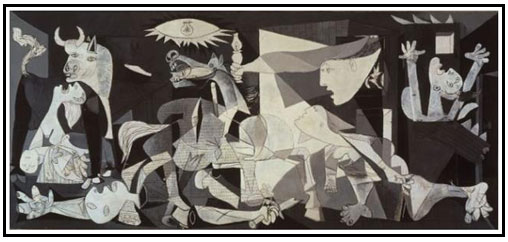
MARC
CHAGALL (1887-1985)
It is not easy to ‘pigeon-hole’ Marc Chagall into an artistic style or
category. Unique in having the experience of Paris’s modern "golden age", Chagall boldly and beautifully
synthesized the art forms of Fauvism and Cubism to give rise to his own personal ‘surrealism with a folkish style’. He gave the grim life
of Hasidic Jews the "romantic overtones of a charmed world". Besides his association with the major ‘abstract’
styles, Chagall created works in various mediums, including painting, book illustrations, stained glass, stage
sets, ceramic, tapestries and fine art prints. “When Matisse dies”, Pablo Picasso remarked in the 1950s, "Chagall
will be the only painter left who understands what color really is".
In the biography “Marc Chagall”, art historian
Sidney Alexander comments,
“In 1924 Dada was reborn under a new name:
Surrealism…basically, Surrealism, for all its stress on automation, the free flow of the subconscious, is Dada
fitted out with a philosophy. Artistic anarchists incongruously organized…against order. Dada was
non-sense. Surrealism is nonsense taking itself seriously. Dada died laughing. Surrealism became a
church, its pope, Breton, issued bulls, hurled anathema; as in all churches heretics inevitably arose; challenge
became schism, and Surrealism dissolved in a fury of splinters.
Certainly many of the values expressed in Breton’s Manifesto of Surrealism (1924) had
long been manifested in Chagall’s art. With the Surrealist he shared a distrust of excessive reliance on the
rationalist (hence his objection to Cubism), on physical realism, or abstract intellectualism, a faith in
intuition, a giving over of oneself to the nudges and suggestions of the subconscious, a conception of the artist
as divinely sized rather that cerebrally directed, a sympathy with primitivism, fold art, children’s
art.
The Surrealists…sought eagerly to have Chagall publicly declare himself in favor of
the new cult. But he refused. Always suspicious of “movements”, or programs, groups, his essential
loneliness had been reinforced by the collectivism he had experienced in Russia. The Surrealists, for all
their stress on the irrational, were in the purely French tradition rebelling against the excessive
Cartesianism of French culture in a very
French way: by issuing reasoned manifestos against reason. Marc was in utter disagreement over the
Surrealist emphasis on “automatism”. The notion that a picture or a poem could automatically create itself
was nonsense to Marc Chagall… A painter of dreams does not dream as he paints.
Chagall’s refusal to join their ranks led almost immediately to attacks against him
as a “mystic” – which perhaps he is, but which
has little bearing on his qualities as an artist. Chagall has described himself as “an unconscious-conscious
painter”.
"Paris through the
Window" (1913)
Oil on Canvas (Guggenheim, New York City)
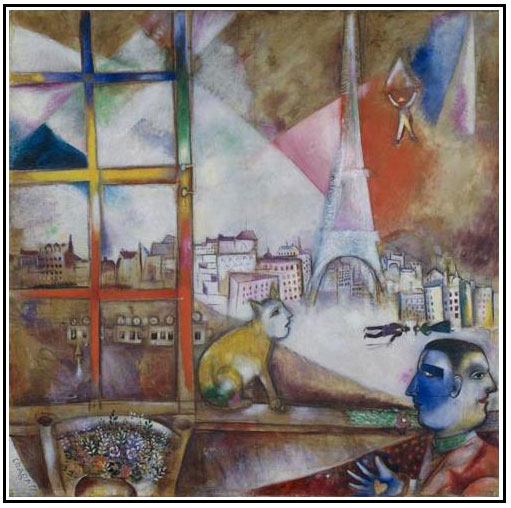
"The
Birthday" (1915)
Oil on Cardboard (Museum of Modern Art, New York City)
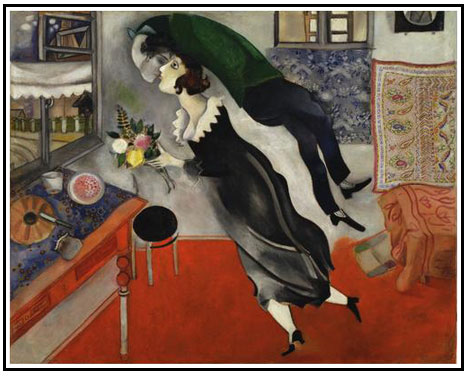
"The
Promenade" (1917)
Oil on Canvas (Russian Museum, St. Petersbury, Russia)
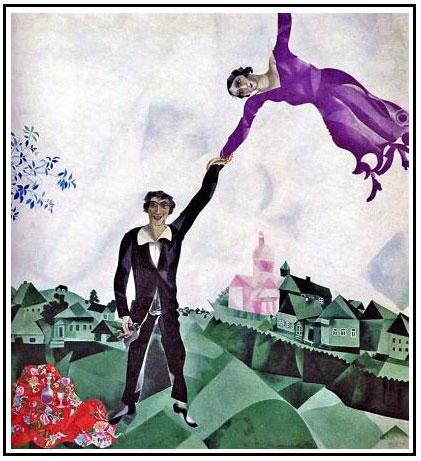
"Solitude" (1934)
Oil on Canvas (Tel Aviv Museum of Art, Tel Aviv)
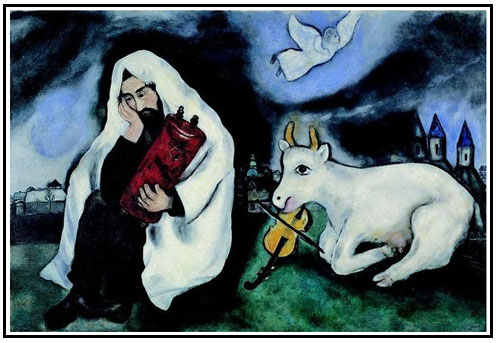
"The
Wedding" (1944)
Oil on Canvas (private collection)
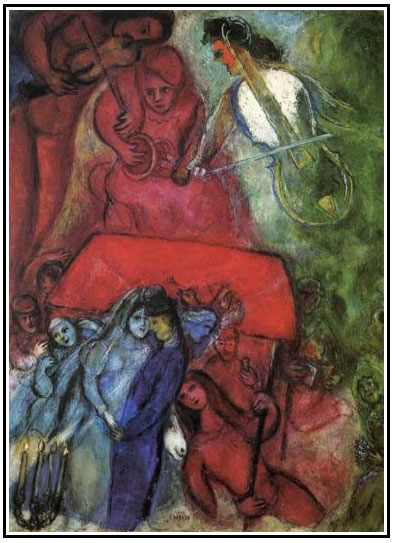
"Liebende in
Vence" (1957)
"Fogg Art Museum" (Harvard University, Cambridge)
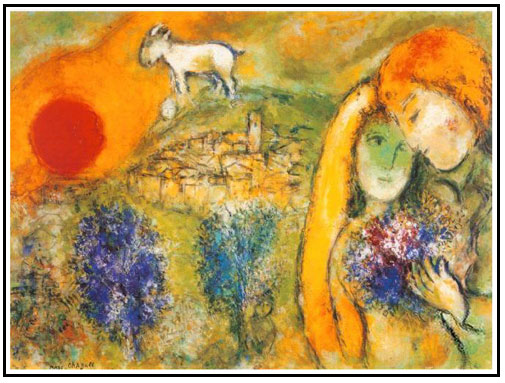
("The Bouquet")
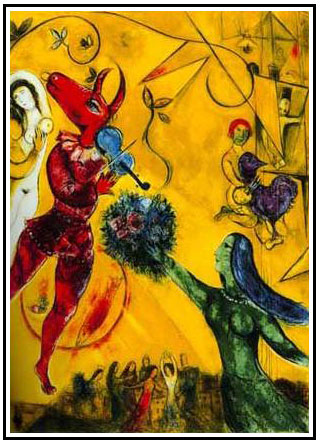
z
| 





















